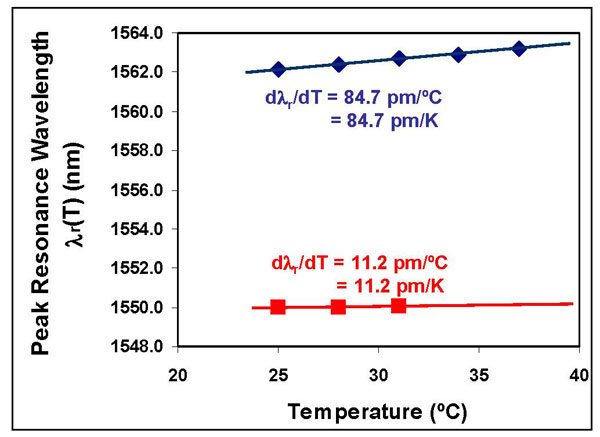Athermal Photonic Circuits on a Silicon Platform
An on-chip electronic-photonic synergy is driven by a continuing demand for better power efficiency, increased functionality, enhanced performance, improved reliability, and reduced cost. With mature CMOS fabrication technology and the potential for seamless integration of electronic and photonic devices on a single substrate, silicon will continue to be the material of choice for both electronics and photonics. However, thermal fluctuations due to on-chip electronics prove problematic in silicon-based devices due to their highly temperature-dependent optical properties. In the applications of wavelength division multiplexing (WDM) and high-resolution spectroscopy, the thermo-optic (TO) effect results in a wavelength shift of the spectral response peak for each wavelength channel, which limits the wavelength resolution and affects the spectral channel density. In the case of a silicon-based ring resonator for WDM applications, temperature control within 0.1oC is necessary to reach optical performance requirements.
We study a passive solution using a polymer over-cladding for thermal stabilization in silicon-based ring resonators where we achieved a temperature dependent resonant wavelength shift (TDWS) of 0.5pm/K. The basic idea behind this approach is to use polymers [1] [2] [3] whose negative TO coefficients compensate for the positive TO coefficient of the waveguide core region (Figure 1). The elimination of temperature dependent characteristics is more challenging for silicon than for silica. First, the TO coefficient of silicon is 18 times higher than that of silica. In addition, the refractive index of silicon is much larger than that of silica, resulting in highly confined optical modes in the waveguide core region. The confinement of the optical mode plays a significant role in compensating for the thermo-optic effect. We overcome the challenges by 1) using a cladding polymer developed by Enablence, designed to have a high TO coefficient, and 2) waveguide-engineering to control optical confinement and hence achieve athermal operation.

Figure 1: Plot showing TO compensation with polymer cladding where the peak shift reduces from 85pm/K for oxide over-cladding to 11pm/K for the polymer over-cladding.
References
- W.N. Ye, J. Michel, and L.C. Kimerling, “Athermal high-index-contrast waveguide design,” IEEE Photon. Technol. Lett., vol. 20, pp. 882–884, 2008. [↩]
- J. Teng, P. Dumon, W. Bogaerts, H. Zhang, X. Jian, X. Han, M. Zhao, G. Morthier, and R. Baets, “Athermal Silicon-on-insulator ring resonators by overlaying a polymer cladding on narrowed waveguides,” Optics Express, vol.17, no.17, pp.14627-14633, 2009. [↩]
- J.M. Lee, D.J. Kim, H. Ahn, S.H. Park, and G. Kim, “Temperature Dependence of Silicon Nanophotonic Ring Resonator with a Polymeric overlayer,” Journal of Lightwave Technology, vol. 25, no. 8, pp. 2236-2243, 2007. [↩]